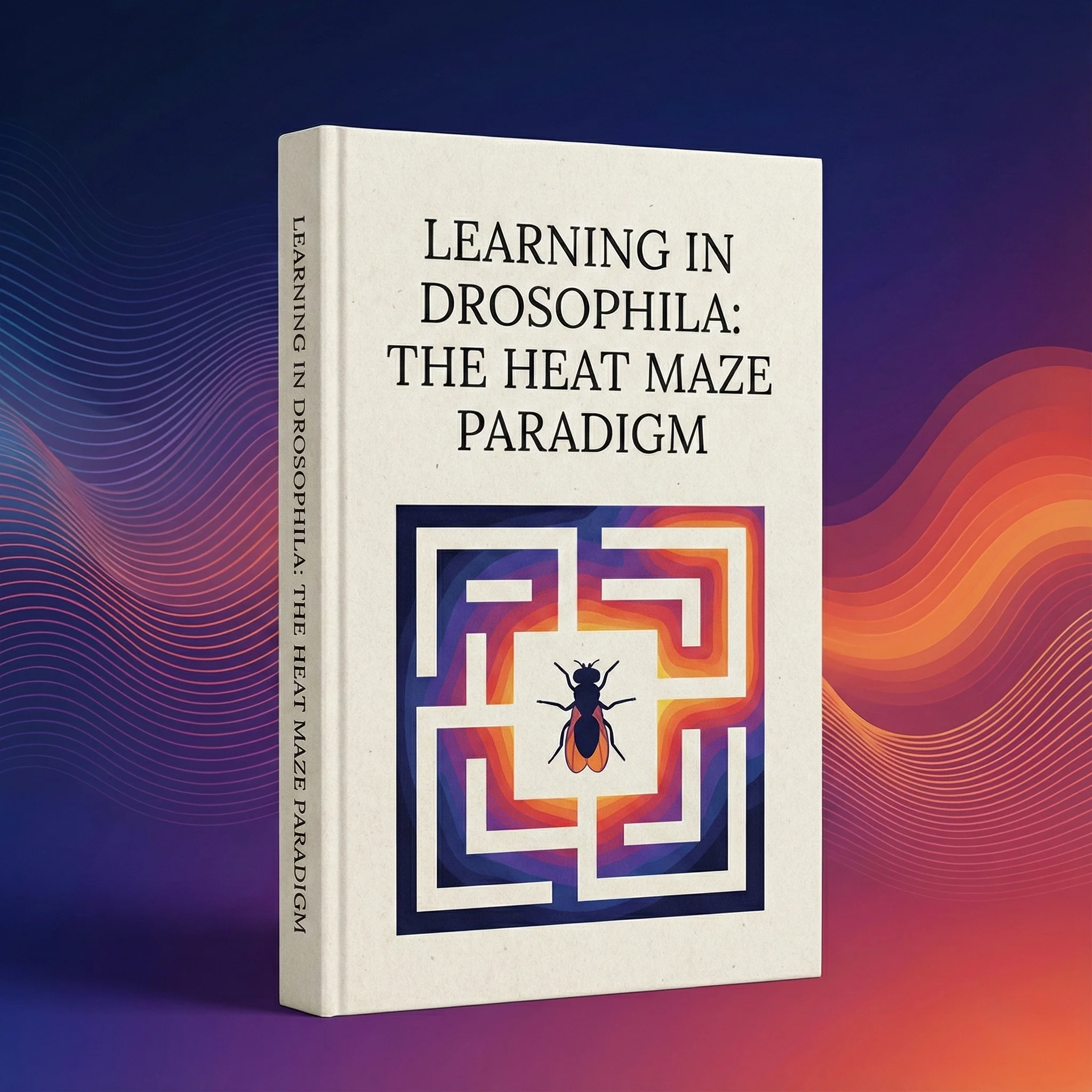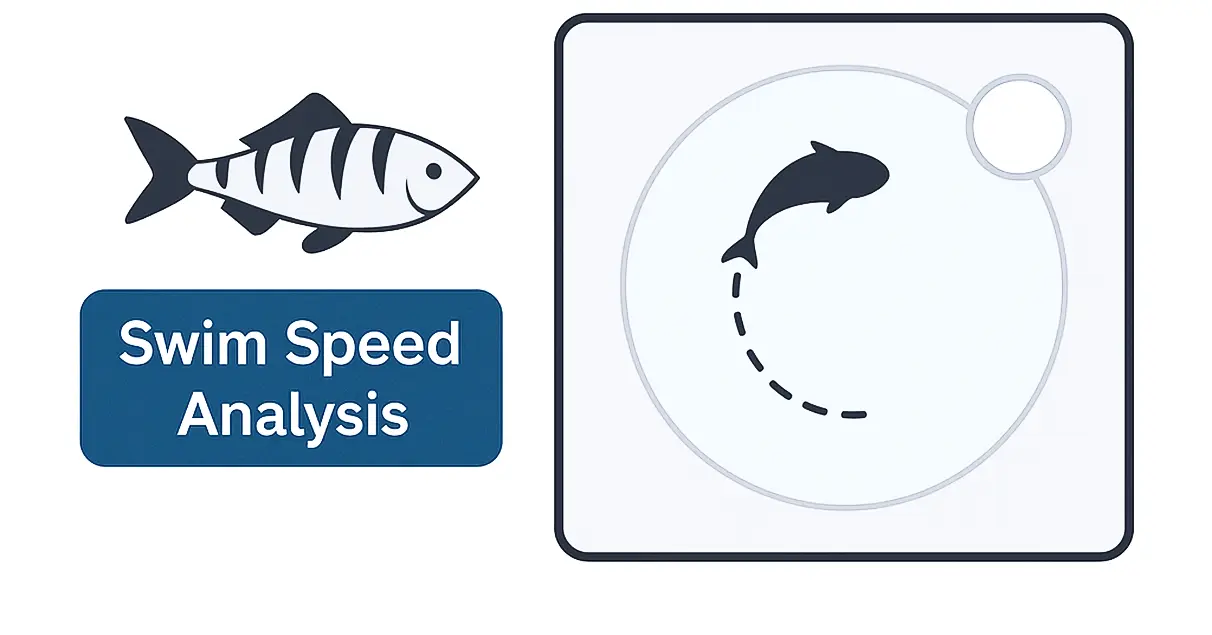

In behavioral neuroscience, walking is often viewed as a background behavior—a default mode of movement that serves as a platform for analyzing more dramatic actions like rearing, jumping, or freezing. But this perspective underestimates walking’s value. In truth, walking is a complex and highly informative behavior that reflects not just physical ability, but also neurological coordination, emotional state, cognitive processes, and environmental interaction.
At Conduct Science, we champion a deeper understanding of foundational behaviors. Walking, in particular, represents a dynamic interplay of brain-body communication, and it offers profound insights into both normal function and disease.
At first glance, walking in rodents may appear effortless—an automatic behavior requiring little conscious control. But in reality, walking is a finely tuned symphony of neuromechanical coordination, integrating central nervous system function with peripheral musculature and continuous environmental feedback. Every step taken by a rat or mouse is the result of millisecond-precise signaling cascades between the brain, spinal cord, sensory systems, and skeletal muscles.
The foundation of rodent locomotion lies in the central pattern generators (CPGs) of the spinal cord. These networks of interneurons are capable of producing rhythmic motor output—such as alternating limb movements—even in the absence of higher brain input (Kiehn, 2016). CPGs form the core motor rhythm, ensuring basic walking cycles can be maintained. However, real-world walking isn’t just repetitive—it’s adaptive, responsive, and context-sensitive. That’s where supraspinal modulation comes into play.
The motor cortex, for instance, is responsible for voluntary initiation of locomotion and coordination of complex movements. It processes visual, tactile, and proprioceptive information to guide where and how the rodent moves. Lesions to the motor cortex in rodents often lead to delayed initiation, poor limb control, or an inability to adapt to novel environments—demonstrating its crucial role in dynamic motor planning.
The basal ganglia, particularly the striatum, contribute to movement selection and execution by filtering motor programs. Dysfunction in this area—as seen in Parkinson’s disease models—results in bradykinesia (slowness of movement), reduced stride length, and impaired gait flexibility (Leblond et al., 2003). Rodents with nigrostriatal dopamine depletion show gait patterns that closely mirror human patients, including shuffling steps and postural instability.
Another essential structure is the cerebellum, which fine-tunes motor output through its regulation of balance, timing, and coordination. Rodents with cerebellar damage often exhibit ataxic gaits, characterized by unsteady limb placement, abnormal stance width, and erratic footfall patterns. These features highlight the cerebellum’s role in ensuring smooth, coordinated movement across all four limbs.
Equally important is the brainstem locomotor region, particularly the mesencephalic locomotor region (MLR) and the reticulospinal tract, which transmit descending excitatory commands to spinal CPGs. These structures allow transitions between motor states—such as from rest to walking, or walking to running. By modulating CPG activity, the brainstem ensures that locomotion is adjusted according to urgency or environmental demands.
Walking also relies heavily on sensory feedback loops—particularly proprioception, which informs the brain about limb position and muscle tension in real time. Proprioceptive signals, transmitted via dorsal root ganglia and processed in the somatosensory cortex and spinal cord, are essential for maintaining limb symmetry, adapting to uneven terrain, and correcting errors in foot placement. In rodent models of peripheral neuropathy, where proprioceptive input is impaired, walking becomes irregular and unstable, reinforcing the feedback loop’s role in locomotor precision.
Moreover, walking involves bilateral coordination, especially in quadrupeds like rodents. This coordination is managed by commissural interneurons in the spinal cord that synchronize activity between the left and right sides of the body. Any imbalance—whether due to spinal cord injury or experimental lesion—leads to asymmetric gaits, circling behavior, or limb drag, making these neural elements crucial in spinal injury and recovery research.
From a mechanical perspective, walking demands robust muscular activity. Rodents rely on a push-pull mechanism using extensor and flexor muscles to propel the body forward and maintain posture. Gait phases—including stance, swing, toe-off, and heel-strike—are tightly coordinated across all four limbs. Even subtle changes in muscle tone, joint flexibility, or limb loading can drastically alter walking patterns—factors often explored in orthopedic, pharmacological, or toxicological research.
Importantly, walking behavior in rodents reflects an interaction between pre-programmed movement and adaptive motor control. This is why rodents can quickly switch from slow walking to rapid escape runs, navigate narrow beams, or leap onto elevated platforms—despite their small size and relatively simple brains. Their ability to modify gait in response to visual and tactile cues demonstrates the plasticity of their locomotor systems, a feature that makes rodents such valuable models for motor learning and rehabilitation studies.
Ultimately, walking in rodents is far from a passive activity. It is a neuromechanical dialogue—a flow of information from the brain to the limbs and back again, constantly shaped by internal states and external demands. Studying this behavior not only reveals the integrity of motor circuits but also exposes how those circuits adapt, compensate, or fail under pressure.
While walking is often treated as a default or control behavior in rodent studies, it is, in fact, a deeply expressive behavior that mirrors the animal’s internal emotional landscape. A rodent’s locomotion is not only a product of muscular mechanics and motor planning—it is also modulated by fear, anxiety, arousal, confidence, and mood. Just as a human’s gait might change under stress or sadness, so too does the walking behavior of rodents reflect how they feel.
Emotional modulation of locomotion is perhaps most visible in anxiety-related paradigms such as the Open Field Test and the Elevated Plus Maze. In these settings, rodents exhibit well-characterized avoidance behaviors in response to aversive stimuli like open spaces or heights. These environments are not physically threatening, but they are perceived as dangerous by rodents due to their natural inclination to avoid exposure to predators. As a result, their walking pattern becomes cautious and guarded. Instead of confidently crossing open zones, anxious rodents tend to hug the walls (a behavior called thigmotaxis) or freeze intermittently, avoiding movement altogether.
This behavioral inhibition leads to reduced overall locomotor activity, decreased entries into central or exposed zones, and fewer transitions between arms in the Elevated Plus Maze. Importantly, this suppression of walking is not due to motor impairment—the animals are physically capable of movement—but rather a behavioral manifestation of emotional restraint. Walking thus becomes an index of perceived threat, a behavioral proxy for internal states like fear and uncertainty (Carola et al., 2002).
In contrast, hyperlocomotion—manifested as increased walking speed, path length, or repetitive pacing—often reflects heightened arousal, stress, or hyperactivity, and can be observed in various pathological models. Rodents exposed to psychostimulants (e.g., amphetamines), or bred for traits modeling manic episodes or dopaminergic dysregulation, display exaggerated and erratic walking patterns, sometimes circling, rearing excessively, or darting unpredictably. These behaviors represent emotional dysregulation, where motor systems are overdriven by heightened motivational circuits.
Depressive-like states, induced by chronic mild stress or social defeat, yield the opposite pattern: psychomotor retardation. In these models, rodents exhibit slower, less purposeful walking, often with longer pause durations, reduced exploration, and lower total distance traveled. These changes align with core features of human depression, such as fatigue, reduced motivation, and anhedonia. The affected rodent may still explore, but does so without curiosity or engagement—a difference that, while subtle, is quantifiable through movement analysis.
Notably, the trajectory and quality of walking also reflect emotional state. An animal that moves with smooth, consistent paths is typically well-adapted to its environment. In contrast, one that stops abruptly, doubles back, or frequently changes direction may be showing signs of conflict, indecision, or anxiety. These micro-movements provide a granular view of emotional reactivity and are increasingly being analyzed with advanced video tracking systems, including machine learning approaches capable of detecting nuanced movement signatures (Mathis et al., 2018).
Walking also offers insights into social-emotional responses. In social interaction paradigms, rodents may approach or avoid others based on prior experience or emotional conditioning. Decreased walking toward conspecifics may indicate social withdrawal or increased anxiety, while increased locomotion with no affiliative behavior may signal hyperarousal or autistic-like traits. These behavioral variations are critical in modeling psychiatric conditions such as schizophrenia, social anxiety, or autism spectrum disorder (ASD).
From a neurobiological standpoint, emotional regulation of walking behavior is orchestrated by a complex interplay between the amygdala, prefrontal cortex, hippocampus, and hypothalamus—regions known to process fear, reward, memory, and stress (LeDoux, 2000). These areas modulate output to motor circuits in the basal ganglia and brainstem, shaping how and when movement is initiated or suppressed in emotionally salient contexts. This top-down control ensures that walking behavior aligns with environmental demands and internal states—whether that means freezing in fear, fleeing in panic, or calmly exploring a novel area.
In conclusion, to study rodent walking behavior is to listen to their emotional voice—spoken not in sound, but in movement. The subtle slowing of steps, the nervous turn away from center, the sprint toward safety—these are not random patterns, but messages. With the right tools and attention, we can translate these messages into meaningful insights about the mind in motion.
Rodents do not just walk randomly—they walk with purpose. In cognitive and spatial memory tasks such as the Morris Water Maze or T-Maze, walking trajectories become more efficient as learning consolidates. Early in the training, rodents exhibit exploratory, indirect walking paths. As they acquire the task, walking becomes more linear and directed, reflecting learned spatial associations and goal-oriented behavior.
In decision-making paradigms, hesitation or altered gait near choice points can reflect cognitive conflict or uncertainty. These subtle inflections in walking behavior—when analyzed carefully—can yield insights into working memory, attention, and motivation.
Even in the absence of structured tasks, spontaneous walking patterns in enriched vs. barren environments provide data on environmental responsiveness, learning potential, and curiosity levels. Walking becomes a proxy for adaptive engagement—an animal’s willingness to interact with its surroundings and navigate its world.
In the realm of preclinical research, walking behavior in rodents has emerged as a powerful tool for modeling, diagnosing, and tracking a wide spectrum of diseases that affect the nervous system, muscles, and even psychological function. As a behavior that is both quantifiable and conserved across species, walking provides a non-invasive, high-resolution readout of complex internal processes. From neurodegenerative pathologies to psychiatric disorders, walking serves not only as a symptom but also as a window into disease progression, therapeutic response, and system-level integrity.
Rodents are uniquely suited for locomotor analysis due to their quadrupedal gait and natural propensity for exploration. This makes subtle deviations in gait patterns, speed, and postural control easier to detect and analyze. With advancements in automated gait analysis platforms (e.g., CatWalk™, DigiGait™), researchers can now measure dozens of locomotor parameters—including stride length, step cycle, stance duration, paw pressure, swing-to-stance ratios, and gait symmetry—with remarkable precision.
In Parkinson’s disease (PD) models, walking behavior is one of the earliest and most consistent behavioral indicators of dopaminergic dysfunction. Rodents with 6-hydroxydopamine (6-OHDA) lesions to the nigrostriatal pathway exhibit hallmark symptoms such as bradykinesia, shortened stride length, increased step variability, and gait freezing (Tillerson et al., 2002). These behaviors mirror clinical symptoms in humans, offering translational validity and providing measurable outcomes for testing neuroprotective or symptomatic therapies.
Similarly, in Huntington’s disease (HD) models, particularly those with CAG-repeat expansions, rodents show hyperkinetic and erratic walking patterns, interspersed with poor limb coordination and frequent foot misplacements. These motor disturbances emerge before cognitive deficits and can be used to track early neurodegeneration or therapeutic efficacy in gene-silencing studies.
In ALS (Amyotrophic Lateral Sclerosis) models, such as SOD1-G93A mice, walking becomes compromised as motor neurons degenerate. Changes in hindlimb swing, foot drag, and stride length serve as quantitative proxies for neuromuscular decline, enabling researchers to monitor disease onset and progression longitudinally (Baldassarre et al., 2019).
Walking analysis is also central to assessing spinal cord injury (SCI) and peripheral nerve injury models. Following a spinal lesion, rodents typically show hindlimb paralysis or paresis, dragging limbs or walking with an uneven gait. Over time, the extent of functional recovery can be gauged through improvements in gait symmetry and weight-bearing ability. Scales like the BBB (Basso, Beattie, Bresnahan) locomotor rating scale and the horizontal ladder test are widely used to score walking recovery.
These models are critical for evaluating stem cell therapies, neuroprosthetics, and pharmacological interventions, as even partial restoration of walking behavior can signal meaningful neuroplastic changes or regeneration.
Walking also reveals disruptions in models of psychiatric illness and neurodevelopmental conditions, often through patterns of hyperlocomotion, hypoactivity, or stereotypic movement. For example, mouse models of schizophrenia, such as those treated with NMDA receptor antagonists (e.g., ketamine), frequently exhibit erratic walking behavior, with increased locomotor activity, rearing, and circling. These patterns are linked to dysregulated glutamatergic and dopaminergic signaling, paralleling psychomotor agitation in schizophrenia.
In contrast, chronic stress or depressive-like states often reduce exploratory walking, leading to longer rest bouts, diminished center-zone exploration in open field tests, and slower ambulation. These signs of psychomotor retardation are important markers for screening antidepressant efficacy or modeling behavioral despair (Willner, 2005).
In autism spectrum disorder (ASD) models, such as BTBR T+tf/J or Shank3 knockout mice, walking may become repetitive, circling, or fragmented—indicative of motor stereotypies and sensory-processing abnormalities. These locomotor traits are critical for understanding how sensorimotor gating and social cognition are intertwined in ASD.
Even outside of classical neurology, walking behavior serves as an important physiological marker. In models of obesity, diabetes, or cardiovascular disease, rodents often show reduced voluntary locomotion, increased fatigue during forced treadmill walking, or altered energy expenditure during ambulation. These changes reflect not only biomechanical limitations but also systemic inflammation, reduced cardiovascular efficiency, and neuromuscular fatigue.
When integrated with metabolic cages and telemetry, walking data can be correlated with oxygen consumption (VO2), energy balance, and blood glucose levels, offering a systems-level approach to studying chronic diseases and therapeutic strategies aimed at improving overall healthspan.
What makes walking behavior especially valuable is its utility as a real-time, non-invasive therapeutic endpoint. Whether evaluating a novel drug, stem cell transplant, physical rehabilitation strategy, or gene-editing tool, the ability to track improvements (or deterioration) in walking patterns provides a clear, functional measure of intervention impact.
Walking tests are also suitable for longitudinal designs, allowing repeated measures in the same animals across weeks or months—critical for studying chronic diseases and neurodegenerative progression. This reduces animal numbers, increases statistical power, and aligns with 3Rs principles (Replacement, Reduction, Refinement) in ethical animal research.
Walking behavior is a microcosm of systems-level function—a convergence of motor planning, emotional processing, neural integrity, and physiological resilience. In disease modeling, each step a rodent takes is not just movement—it’s a message from the body and brain. Subtle changes in gait reflect the earliest signs of dysfunction and offer clear, measurable endpoints for evaluating recovery.
Walking does not occur in a vacuum—it is context-sensitive. Rodents modulate their walking behavior based on environmental cues, time of day, and social context. Being nocturnal, rodents exhibit peak locomotor activity during the dark phase, making circadian timing an essential variable in locomotion studies (Mistlberger, 2005).
Changes in lighting, cage enrichment, or auditory stimuli can suppress or stimulate walking. For example, rodents in enriched environments tend to walk more confidently, with fewer pauses and greater exploratory range. Conversely, barren cages often induce repetitive pacing or sedentary behavior, outcomes relevant to studies of environmental stress, neuroplasticity, and animal welfare (Rosenzweig & Bennett, 1996).
These modulations also provide windows into adaptive flexibility. A rodent’s ability to change its walking pattern in response to new environments or stressors is indicative of cognitive flexibility and neurobehavioral resilience—traits that are central to understanding neuropsychiatric disorders and recovery processes.
Walking is more than movement—it is a language of the brain, expressed through motion. Each step, stride, or pause is a reflection of neural health, emotional balance, cognitive demand, and environmental negotiation. To overlook walking in rodent research is to ignore one of the richest behavioral signals available.
As a behavior that integrates motor control, affect, cognition, and adaptation, walking is uniquely positioned to serve as a diagnostic, predictive, and therapeutic endpoint. Whether you’re studying dopamine dysfunction, antidepressant efficacy, spinal recovery, or anxiety regulation, walking provides a non-invasive, ethically sound, and highly interpretable window into the organism.
At Conduct Science, we continue to innovate tools that allow researchers to capture the granular nuances of walking behavior—with the conviction that every step taken tells a story worth hearing.
Written by researchers, for researchers — powered by Conduct Science.










